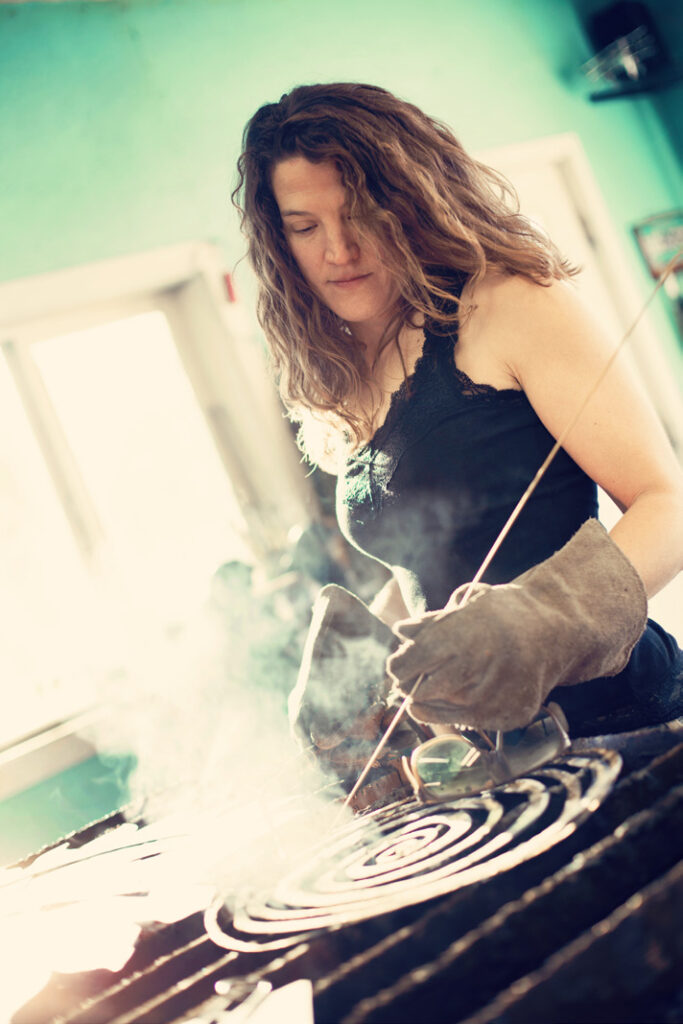
We inhabit a time of social flux with great uncertainty about what the future may bring. It is an anxious hour, burdened with emotional turmoil so that the care of the soul, our immovable rock, is more important than ever. Human creativity is key to our functioning in this environment. The sense of beauty and feeling, the expression of the life force artists gift us in their work, a balm for our pain from living.
By her healing arts, sculptor and naturalist Holly Gittlein sustains us in the present clime, guiding us along our fraught road to a holy place of emotional satisfaction. In her book, Spirit Lines, she feels “humanity’s connection to nature is nearly lost…the planet, strangled with fear, doubt, and confusion, suffer(ing) along with all her creatures” and Gittlein sees “our only hope is to recall a forgotten truth long buried in the abandoned mind of Mother Earth.” An emotion archaeologist, she unearths “the most pressing issues—the mismanagement of our planet’s resources and humanity’s lack of connection with the rhythms of nature (as) we are so removed from the flow of life” that “the fast-paced rat race of humanity’s current paradigm of conquer, compete, exploit just doesn’t work anymore.”
She addresses these concerns by teaching youth and adults to align with nature. opening them up to the “unseen, the touchable beyond the beyond.” Nature’s truth is an anchor to liberation from the deluded mind that goes through life disconnected from self, nature, and others. She believes “we can learn to shift into a higher state of being…where nature resides,” to “sink into the flow of the universe” where “one can see the interdependence and sacredness of life through all things.”
Along with her practice of Tibetan Buddhism, she restores people with her hands and heart by modalities such as practices of massage, meditation and reiki, helping people “where the collaboration in art pieces attunes (them) with nature.” Through intention and mindfulness, she embeds her pieces with “healing mantras, prayers and ancient symbols,” the resultant artwork “created with a high frequency of vibration radiating in all.”
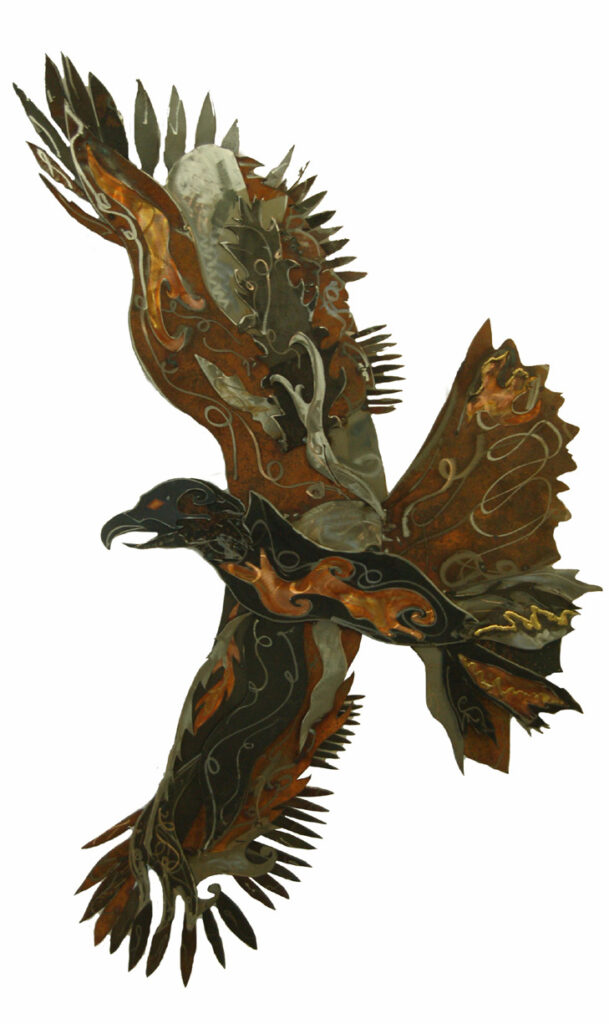
As a researcher and naturalist, Gittlein has kayaked alongside whales, sailed the Pacific Ocean and participated joyfully in numerous expeditions and adventures as a champion of our planet’s bounty. From her work, she senses healing and shifting of focus occurring continuously in our experience and senses strongly that “nature and earth love humanity as her children and will never abandon us,” a worthy sentiment for our current and future days of incessant climate changes.
I mention just a few of her many magnificent sculptures. One, entitled The Beak, is a large metal piece standing for the raptors gracing our skies at all corners of the earth. In many cultures, historically, eagles are everlasting emblems of courage, strength and freedom, qualities so greatly needed by humanity today in our “age of anxiety” as modern ways of living open self-inflicted wounds from a lack of connection to the true self.
Other sculptures, such as Out of Darkness depicting geese in flight reaching for sunlight as they travel across the sky along with a companion piece, or Into the Light with birds swiftly passing before a waning crescent moon, remind us of the unending natural cycles.
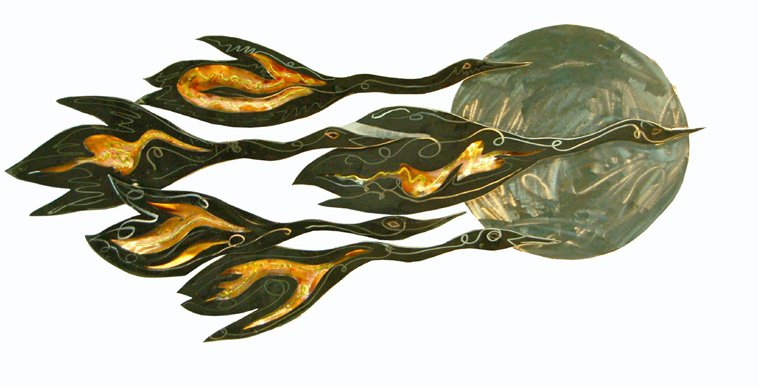
Along with pieces such as these, her Signature Series creations, Water, an early sculpture, and Spirit, capturing nature and humanity’s critical connections, superbly underscore Gittlein’s passions for Mother Earth.
Too, she brings youth and adults to a better understanding of nature through her teaching of art-making processes; both personal and large-scale community sculptures are realized in her oeuvre, including a 22-foot piece for the USAF’s Professional Military Education Center that showcases the sculptor’s spiritual intentions to spread positive energies of the celestial vitality.
She uses neurographic art therapy techniques with her students, a meditative and intuitive method and plans to present this modality at retreats and camps she will lead in 2025, offering this to link the conscious to the subconscious, stimulating “connections between brain cells and neurons, so awareness and mindfulness occur, helping to rewire the mind from stress to calm.”
Gittlein’s well-received public sculptures bring forgotten young people a sense of accomplishment, thereby providing optimistic contributions to the community. The sculptor’s Alaska public art projects and the MY House Art and Nature Camps founded in part by her, have produced multiple central art pieces in the past.
This year, the focus involved working with therapy horses via the organization, STRIDE, where the participants groomed the animals, the students attempting to hear equine heartbeats as they worked. This tactile exercise culminated in the group’s chalk-soaked water paintings with media applied directly to the horses’ bodies, a festive feat enjoyed by humans and steeds alike.
The late neurologist Oliver Sacks saw beyond our culture’s immediate horizons, masterfully writing about mind and meaning in relation to nature’s supremacy. In our current day, our reliance on data points to describe us makes humans “coin for corporate profits.” Dr. Sacks firmly planted our redemption from this scenario by approaching life on the footing of the “human scale.” Too, through dialog, the Dalai Lama and Archbishop Desmond Tutu accentuated this necessity by exploring topics fostering empathy and resilience to guide us toward spiritual recovery. Artist, naturalist and humanist Holly Gittlein brings us closer to this celestial absolute by her ardent, infinitely life-affirming actions.
Note: Author’s references include Holly Gittlein, The Marginalian publication by Maria Popova, the documentary film, Mission Joy: Finding Happiness in Troubled Times and Wikipedia. G&S

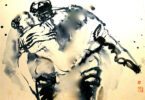
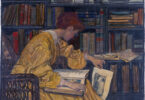
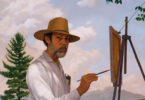
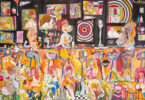
Leave a Comment